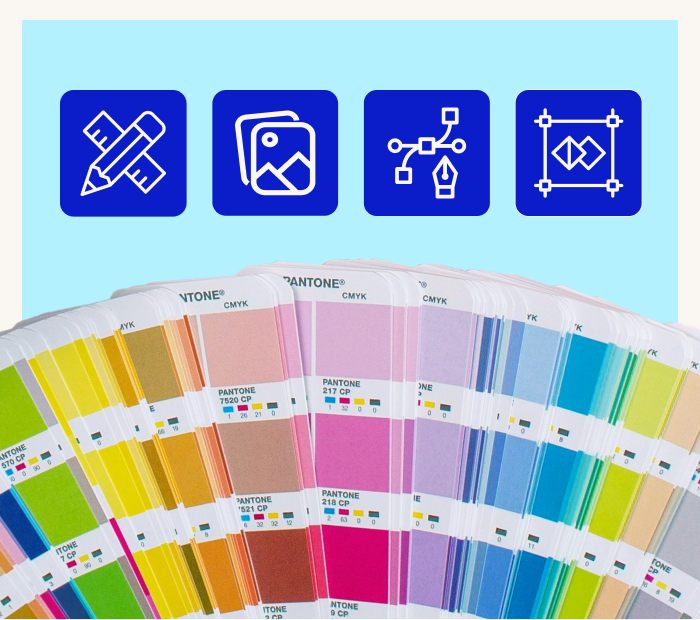What are Mental Models?
When users land on a website, they have pre-existing expectations about element placements, task sequences, and user expectations of their interactions, including website performance. These anticipations collectively form their mental model, representing the user’s belief system about a particular design or website. This mental model isn’t based on factual information but on past experiences and perceived knowledge. This holds significant implications for designers, as user behaviours are heavily influenced by their mental models.

Importance of Mental Models in UX Design
Mental models shape how users interact with digital products. Interfaces that match users’ mental models are easy to use. This makes it easier for users to understand and interact with familiar user interfaces, resulting in smoother interactions. Interfaces that match mental models reduce the risk of errors. Product users who understand how the interface works are less likely to make mistakes or get confused. Mental models help users predict outcomes and make choices as users feel in control and are encouraged to explore and experiment.
Understanding User Mental Models
How Do Mental Models Influence User Experience?
Mental models are cognitive tools shaped by past experiences and knowledge that aid in comprehending and managing the environment. Its importance can be found in every situation. For instance, mental models guide actions like how cars process and knowing the accelerator’s function and the steering wheel’s role.
Interacting with smartphones relies on mental models, such as tapping application icons on your mobile devices, and cooking follows a model involving preheating before baking. Mental models also play roles in assembling furniture, crossing streets, using microwaves, sending emails, and playing musical instruments. These frameworks simplify actions and enable efficient problem-solving.
Incorporating Mental Model Theory in UX Design
Mental models help designers understand how individual users perceive and interact with a product or system. Applying mental models in UX design involves a structured design process to create user-friendly and intuitive interfaces. Below’s the step-by-step approach:
Understand the Users
To apply mental models, first, understand the target users. This means doing user research, interviews, and surveys to learn about their behaviour, needs, and expectations. By genuinely knowing the users, designers can make interfaces that match their mental models.
Identifying User Mental Models
Identify the existing mental models that users have regarding similar products or systems. Mental models are the frameworks or representations of how users think a product should work based on their prior experiences. By studying and analysing these models, designers can align their designs with what users already know.
Incorporate Familiar Interaction Patterns
Design patterns are the tested solutions to common design problems. Users can intuitively comprehend how to interact with the interface by utilising commonly recognised patterns.
Conduct User Testing
User testing is important in design to validate mental models. By observing active users interacting with the design, designers can identify gaps between their intended mental model and the users’ understanding. Iterative testing and refinement ensure the design aligns with users’ mental models and meets their expectations.
Iterate and Refine
User testing is essential for validating design effectiveness. It involves observing users interacting with the design to identify gaps between their mental models and the designer’s intentions. Iterative testing and refinement are necessary to align the design with user mental models and meet their expectations.
Benefits of Designing with Mental Models
Designing with mental models offers several key benefits for UX designers.
Enhanced User Satisfaction and Engagement
Using mental models as a guide, designers can create interfaces that feels familiar and intuitive. When average users encounter a product that matches their mental model, they feel a sense of coherence and understanding. This increases satisfaction and engagement, ultimately enhancing the overall user experience.
Improved Usability and Accessibility
Designers can create interfaces that match the way users think and interact. Users can navigate easily, find information effortlessly, and complete tasks efficiently. Considering mental models helps identify usability barriers and design creative solutions for all users, regardless of digital literacy or disabilities.
Reduced Cognitive Load
Cognitive load is the mind effort required to process information. A product requiring too much thinking can result in user frustration and make it less usable. Designing with mental models can reduce cognitive load by using what users already know.
Informed Decision-Making
Mental models help designers understand how users think and make decisions. By knowing their mental models, designers can anticipate users’ needs and preferences. This knowledge guides design decisions like the layout, navigation, and interactions.
Techniques for Uncovering and Validating User Mental Models
Below are some tips and techniques to effectively uncover and validate these mental models:
User Interviews
Conduct in-depth user interviews to grasp their system thoughts, expectations, and beliefs. Ask open-ended enquiries to understand their mental models and interactions with similar systems.
Observational Studies
Watch users use a system or complete tasks. This option delivers real-time information regarding their interface interactions, decisions, and navigation.
Contextual Inquiry
Use a product in its natural setting. This helps designers understand how mental models affect real-life behaviour.
Surveys and Questionnaires
Gather quantitative impression and expectation data through user surveys or questionnaires. Use particular queries to understand their mental models and preferences.
Card Sorting
Card sorting activities help users categorise information or tasks. This reveals how consumers organise content cognitively.
User Feedback
Invite users to comment on interfaces, features and design concepts. Feedback can show discrepancies between system behaviour and mental models.
User Journey Mapping
Map user journeys to detect touchpoints and interactions. This shows where consumers’ mental models match the design.
Examples of Mental Models in UX Design
By incorporating users’ mental models into UX design, designers can create intuitive interfaces, align with users’ expectations, and provide a seamless and engaging user experience.
E-commerce Shopping Cart
Online shoppers carry their physical shopping cart mental model. UX designers employ this mental model to create a virtual shopping cart symbol that customers can interact with, examine their purchases, and process with the checkout process.
Swipe Gestures
Swiping gestures are associated with flipping pages, like turning a book. UX designers utilise this mental model to develop intuitive app and website content navigation swipe interactions.
Icons for Save and Undo
Users know that a floppy disc icon means “save” and an arrow in reverse means “undo.” UX designers keep these icons so users can reliably accomplish these actions.
Scrolling Behaviour
Users expect more content when they scroll down a website. UX designers use this mental model to create intuitive scroll animations and arrange critical information higher on the page.
App Icons
Certain app functions are associated with certain icons. UX designers preserve these mental models by utilising familiar icons like a magnifying glass for search or a wrench for settings.
Progress Indicators
Users anticipate progress indicators to reflect task completion. UX designers use progress bars to show users where they are in a multi-step process.
User Journey Mapping
Map user journeys to detect touchpoints and interactions. This shows where consumers’ mental models match the design.
Design User-Centric Experiences With Butterfly
We know that web design is more than just a pretty picture—it’s about creating an experience that works for your users. Butterfly is a premier web design company in Melbourne, specialising in creating user-centric experiences and helping you reach your business goals. Our team is made up of experienced designers, developers, and project managers who work together to build websites that solve real problems for our clients. Let’s collaborate and bring your digital goals to life. Contact Butterfly now!




